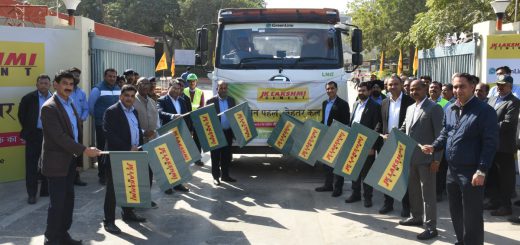Truck industry faces acute shortage of drivers
Transportation and truck drivers are the vital players which support business and the backbone of the logistics industry. The Indian logistics industry has in the past had an abundance of truck drivers. But the situation is set to change dramatically as industry is facing an unprecedented shortage of drivers. This is likely to be a hindrance in the growth of this sector. While the West is already facing an acute shortage of truck drivers, Indian industry, which was comfortably placed, suddenly finds itself facing the same kind of problem and this problem is having no easy and quick solutions.
The Indian trucking industry has around 5.6 million vehicles on the road and needs around 700,000-800,000 new truck drivers every year. Now, the time come when nobody wants to be a truck driver. “Why would anyone become a driver when he is poorly paid and does not get any government sponsored social benefits? They spend more time on the truck and don’t have access to a respectable place to rest or relax on the roads.
While young men seek other alternatives, older truck drivers say they would rather not have their children stepping into their shoes.
In India trucking is an extremely challenging and physically demanding job. Truckers spend long hours driving in extreme conditions. Drivers are away from home for weeks at a time— of course, local drivers return home in the evenings. The situation becomes dire with innumerable and time consuming stoppages at entry points and check points to pay toll charges and taxes like octroi and sales tax. At the toll nakas, conditions become murkier as drivers are compelled to bribe rogue police officers or the staff at the nakas.
Others pointed out that society looked down upon drivers and they were not getting good quality employees. A driver is subjected to all possible inhuman conditions and treatment. Who will wish their sons to become truck drivers? This is happening so despite the work demand increasing manifold.
Truck transport sector was earlier objected by many operators since this could have made them responsible to follow industry norms. “Why only 5% of fleet owners and transport firms are following the norms laid down in the Motor Transport Workers Act? There are legal provisions to protect the interest of drivers by ensuring their minimum wage, PF, medical leave and gratuity. If that happens, it will work as a motivation to take up driver’s job.
Most truck makers are engaging with driver-care programmes at three levels —launching trucks that not only offer a better power to weight ratio, but also have better creature comforts that make the life of a driver a bit easier.
For instance, Ashok Leyland Ltd.’s U-Truck vehicles and Tata Motors’ Prima range of trucks offer features such as air conditioning, sleeping cabins and music systems. Truck makers are conducting driver-training programmes either through full-fledged schools or encouraging fleet operators to send drivers to their factories.
It’s not the vehicle makers alone that have taken up driver training as a cause. Shriram Transport Finance Co. Ltd, which offers credit to small individual transporters for pre-owned and new trucks, has also been affected by the driver shortage. The company, in association with a non-governmental organization of Indian Institute of Technology graduates, is setting up a driver training institute in Kolhapur in Maharashtra to train 600-700 drivers in a month.
At present, about 80% of the country’s freight is transported by trucks and the rest by railways.
The logistics industry’s growth and even its future, rests on the humble truck driver. With most goods being transported by road, a shortage of truckers could curdle the hopes and dreams of the industry. And now with the decision to permit multibrand FDI in retail looming on the horizon, a free flowing supply of drivers is a compelling necessity. Both the government and industry must recognize this need and urgently ameliorate the working environment of its drivers to give industry that much-desired impetus to growth.





Recent Comments